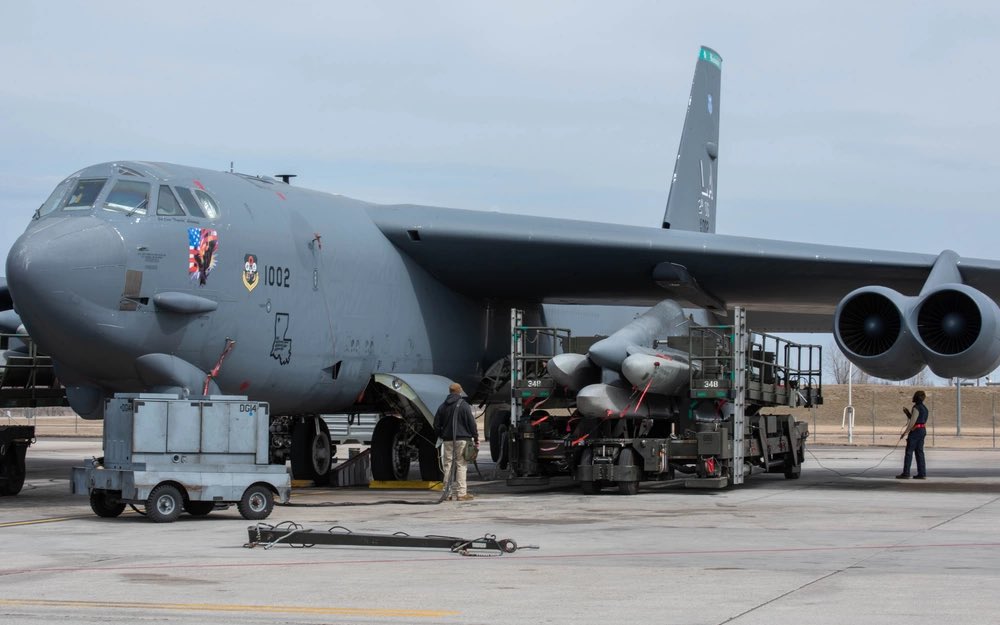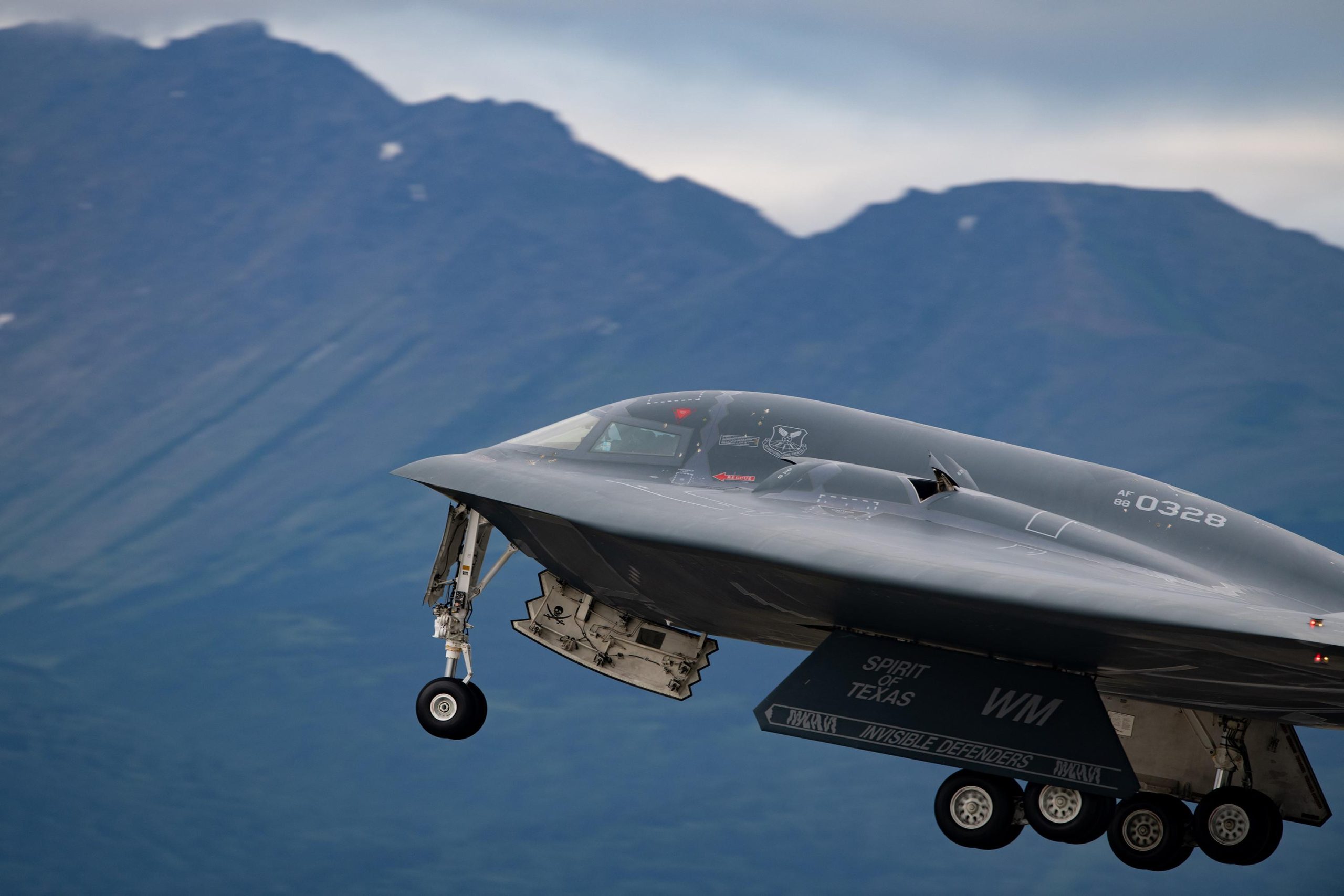Amid rising tensions with Russia and China, the US Air Force conducted the Prairie Vigilance exercise earlier this week. Crews practiced loading the AGM-86B Air-Launched Cruise Missile (ALCM) on its B-52H bombers at the Minot Air Force Base (AFB) in North Dakota.
The Cold War-era missile was designed to saturate and overwhelm Soviet air defenses, either acting as a decoy or presenting targeting dilemmas. It could then strike missile and radar sites with blast fragmentation warheads.
Later upgrades enhanced the range enough for the B-52s to fire the missile while staying well outside its airspace and the reach of its surface-to-air missiles (SAM).
The US Air Force (USAF) describes the AGM-86B and its variants, like the AGM-86C/D, as dual conventional and nuclear-capable ALCMs “developed to increase the effectiveness of B-52H bombers. “In combination, they dilute an enemy’s forces and complicate defense of its territory.”
The AGM-86B carries a “nuclear payload” and can “fly complicated routes to a target through the use of a terrain contour-matching guidance system.” “The AGM-86C carries a conventional blast/fragmentation payload, and the AGM-86D carries a conventional penetrating warhead. Both conventional variants employ a GPS-aided inertial navigation system.”
Over the last few years, the US military has been developing the AGM-181 Long-Range Standoff Weapon (LRSO) as a replacement for the AGM-86. This will be fired from the B-52H and the upcoming B-21 Raider as a tactical nuclear weapon (TNW).

Videos Show AGM-86s Being Loaded
A publicity video showed eight pylons carrying six missiles each (a total of 48) rolling out from the weapons storage area to the B-52 parked on the tarmac. The missiles are placed in two groups of three, one behind the other, on a pylon located in the inner wing section near the wing root (where the wing meets the fuselage).
A statement from the Minot Air Force Base (Minot AFB) described the annual exercise aimed at validating the “safety, security and reliability of the nuclear triad,” with this one being the “bomber leg.”
The other two are the ground-launched intercontinental ballistic missiles (ICBM) that fire the Minuteman III missile and the US Navy’s nuclear-powered SSBNs that carry the Trident submarine-launched ballistic missiles (SLBM) with atomic warheads.
Another four-and-a-half-minute video showed the daunting process of tractors carrying the missiles reaching the parked B-52Hs, and the AGM-86 being lifted, attached, and screwed into the pylons. This ‘munitioning’ process can be assumed to be followed by extensive electrical and fire control system tests to check the missile’s integration with the B-52’s avionics and targeting.
It is also likely that a simulated firing took place since another video showed eight to ten B-52s taking off. Crews usually practice the flight profiles and launch sequences needed to engage the missiles in simulated launches.
Key Nuclear Strike Capability
The airmen and crews who participated in Prairie Vigilance 24-3 belonged to the 5th Bomb Wing based at Minot AFB in North Dakota and the 2nd Bomb Wing at Barksdale AFB in Louisiana.
“During PV, Airmen responsible for maintenance, security forces, aircrew, and command and control at Team Minot undergo rigorous training to ready them for potential threats against the United States and its allies,” Minot AFB added in a statement.
PV’s aim is to provide a “realistic training environment for Global Strike Airmen to exercise flexible, strategic airpower.” It is designed to test both bomb wings’ “ability” to conduct “strategic bomber readiness operations” by “enabling” the 5th and 2nd Bomb Wings to “work together.”
This year, four B-52H Stratofortresses from Barksdale AFB flying to Minot will participate, ” facilitating joint training opportunities and enhancing skill sets while fostering cooperation.”
The statement quoted Col. Daniel Hoadley, 5th Bomb Wing commander: “Prairie Vigilance demonstrated our commitment to safe, secure, effective nuclear operations. Further, this exercise is tangible proof that the Warbirds stand ready to deter strategic attack and, if necessary, respond at a moment’s notice.”
The US Strategic Command needs exercises like PV to ensure nuclear strike forces are “organized, trained, and equipped for the tasks they are asked to do on a daily basis as well as respond to emerging crises.”

Nuclear weapons on air force bombers like the B-52H, B-2 Spirit, and other nuclear free-fall bombs based in European bases that can be dropped from jets like the F-16, F-15, F-35, and USN submarines comprise 70 percent of the US’s deployed nuclear force that make it survivable in the event an adversary aims to wipe out its ground-based nuclear launch silos.
Interestingly, weapons like the AGM-86 actually spurred the development of Soviet-era platforms like the Tor SAM system and airborne early warning (AEW) aircraft.
According to Russian reports, the development of the 9K330 Tor was motivated in the 1970s by “solving the traditional task and ensuring the defeat of aviation weapons like air-to-ground missiles, gliding bombs and cruise missiles of the ALCM-type.” “An effective solution to these problems required automation of the entire process of combat work and the use of more advanced radar equipment.”
- The author can be reached at satamp@gmail.com
- Follow EurAsian Times on Google News




